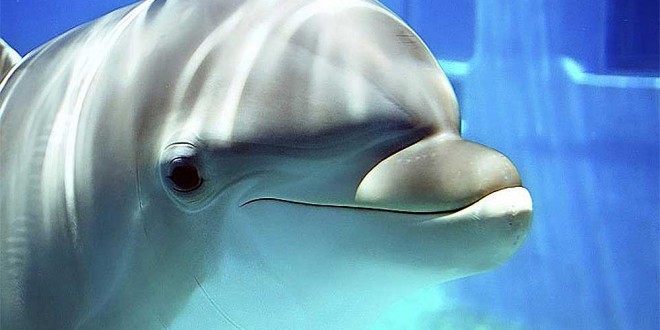Scientists claim to have captured an image that shows how dolphins perceive the world around them using echolocation.
Using an imaging system called Cymascope, Jack Kassewitz of SpeakDolphin, a dolphin communication research organization, and his team were able to isolate and record dolphin echolocation sounds directed onto specific objects. Kassewitz’s latest research showed the dolphin’s echolocated impression of a submerged human.
“When a dolphin scans an object with its high-frequency sound beam, each short click captures a still image, similar to a camera taking photographs,” Jack Kassewitz of the Speak Dolphin research organization said in a statement.
But making these images much more difficult than printing a two-dimensional photo. Dolphins use echolocation to create an impression of the world around them. These pictures hold a wealth of three-dimensional information like depth, making it difficult to translate into flat images.
To make these shapshots, Kassewitz and his colleagues used specialized audio equipment to capture the signals. The team then used a device called a CymaScope to translate the clicks and squeaks a female dolphin named Amaya made while she explored several objects in her tank, Jennifer Viegas reports for Discovery News.

The objects Amaya investigated included a flowerpot, cube and the diver Jim McDonough. The CymaScope translated her sounds into both a 2-D image and a 3-D-printed model. The model demonstrates the almost-holographic information that dolphins get from echolocation, Devin Coldewey writes for NBC News.
“Seeing the 3-D print of a human being left us all speechless,” Kassewitz said in a statement. “For the first time ever, we may be holding in our hands a glimpse into what cetaceans see with sound.”
The CymaScope captured “what-the-dolphin-saw images” of not only objects’ full silhouettes, but many more details than expected, Kassewitz said in a statement. The researchers could just make out the diver’s weight belt in the fuzzy depictions.
There is still much to learn about the level of detail dolphins can decipher. The scientists are also eager to investigate if and how dolphins communicate with each other using this sono-pictorial language.
“The dolphin has had around fifty million years to evolve its echolocation sense, whereas marine biologists have studied the physiology of cetaceans for only around five decades, and I have worked with John Stuart Reid for barely five years,” Kassewitz said in a statement.
Agencies/Canadajournal
 Canada Journal – News of the World Articles and videos to bring you the biggest Canadian news stories from across the country every day
Canada Journal – News of the World Articles and videos to bring you the biggest Canadian news stories from across the country every day




ummm, don’t you think posting an image would make sense?